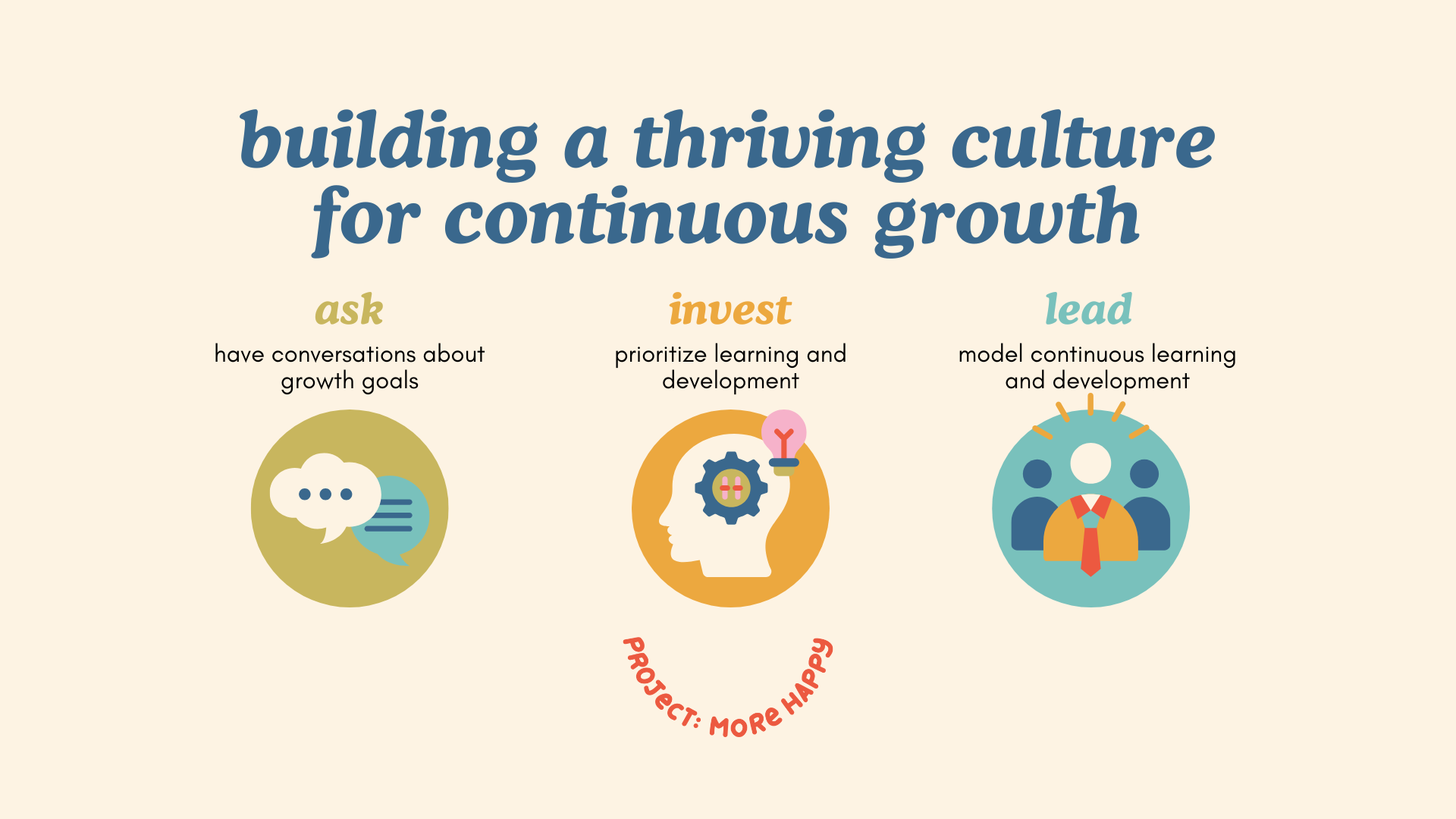Building a Culture of Continuous Growth
When we talk about building thriving workplaces, there’s one essential factor that keeps coming up: growth.
Employees are no longer just looking for a paycheck—they’re looking for opportunities to learn, develop, and progress. The workplaces that provide continuous growth opportunities aren't just fulfilling a wish list; they’re creating a culture that drives retention, innovation and productivity.
In fact, career development is so crucial that 94% of employees say they would stay longer at a company if it invested in their learning and development (LinkedIn Learning, 2019). It’s not just a "nice to have"—it’s an essential ingredient in building a workplace where people and ideas flourish.
So how can companies design environments that prioritize growth and development? And why does it matter so much?
The Link Between Development and Retention
Retention is a key metric for every business. High turnover is costly, both in terms of money and team morale. One of the most effective ways to keep your top talent is to invest in their development.
According to a report by Gallup, companies that focus on employee development see up to 59% lower turnover. People don’t want to feel stagnant—they want to grow. When they feel supported in their career paths, they are far more likely to stay with an organization long-term, leading to higher retention rates and a more loyal workforce.
This makes development a crucial retention strategy. Without growth opportunities, employees are more likely to jump ship for companies that offer better learning and development programs. By providing clear paths for advancement and skill development, businesses create environments where employees feel invested and valued.
When you invest in employee development, you invest in loyalty. Companies that prioritize growth see up to 59% lower turnover—leading to stronger retention and long-term success.
How Growth Drives Productivity and Innovation
Growth doesn’t just affect retention—it also plays a huge role in driving productivity and innovation. Employees who feel challenged and engaged in their roles are more likely to push boundaries and come up with creative solutions.
A study from Harvard Business Review shows that employees who believe their organization supports their development are 3.6 times more likely to be engaged and productive at work. When employees are learning and growing, they are more engaged in their roles and this engagement leads directly to higher productivity.
Innovation also thrives in cultures that prioritize growth. Encouraging continuous learning ensures that employees are not only sharpening their existing skills but are also exploring new ideas and perspectives. This constant infusion of fresh thinking helps companies stay ahead of the competition and adapt to the ever-changing business landscape.
Creating a Culture of Continuous Growth
If we agree that employee development is critical to retention, productivity and innovation, the next question is: how do we design environments that prioritize growth?
It starts with building a culture of continuous learning. This means embedding development opportunities into the daily rhythms of the workplace, ensuring that growth isn’t something that happens in isolated training sessions, but is a constant focus.
Learning never stops. It’s a cycle—learn, apply, reflect, and grow. When we embed continuous learning into our daily work, we create an environment where growth and innovation thrive.
Here are a few ways companies can create this culture:
Offer Regular Learning Opportunities
Provide ongoing access to learning, whether it’s through workshops, online courses, mentorship programs or certifications. Make sure that development is part of your company's DNA, not just an occasional event.
Encourage Skill Diversification
Create opportunities for employees to explore areas outside their current roles. This could be through cross-department projects, job shadowing or internal rotations. Employees who are given the chance to diversify their skill sets are more engaged and bring new perspectives to their work.
Recognize Growth as Success
Success shouldn’t just be measured by hitting targets—it should also include personal and professional growth. Celebrate when employees gain new skills, complete training programs or step out of their comfort zones to tackle new challenges.
Provide Clear Career Paths
Employees need to know there’s room for growth within the company. Offer transparent career paths and help them understand how they can move up or grow laterally within the organization. This clarity is key to keeping top talent motivated and invested in their future with the company.
Putting Growth Into Action
Now that we understand why employee development is so important, it’s time to put it into action. Here are three next steps to build a thriving culture of continuous growth:
Ask your employees about their development needs. Initiate conversations with your team about where they want to grow. Make professional development part of regular check-ins and reviews. By aligning development opportunities with individual aspirations, you show employees that their personal goals matter.
Invest in growth programs. Look at your current investment in learning and development. If it’s lacking, now is the time to make it a priority. Offering formal and informal growth opportunities can change the dynamic of your workplace and keep your team engaged.
Lead by example. Growth starts at the top. When leaders model continuous learning and development, it sets the tone for the entire organization. Share your own growth journey with your team, encourage curiosity and create a safe environment for learning.
To build a culture of continuous growth, leaders must ask about employee growth goals, invest in their development and model lifelong learning.
Investing in the Future
Building a culture of continuous growth isn’t a retention strategy—it’s the key to unlocking productivity, engagement and innovation in your workplace. By prioritizing development, you’re not just investing in your employees—you’re investing in the future of your company.



